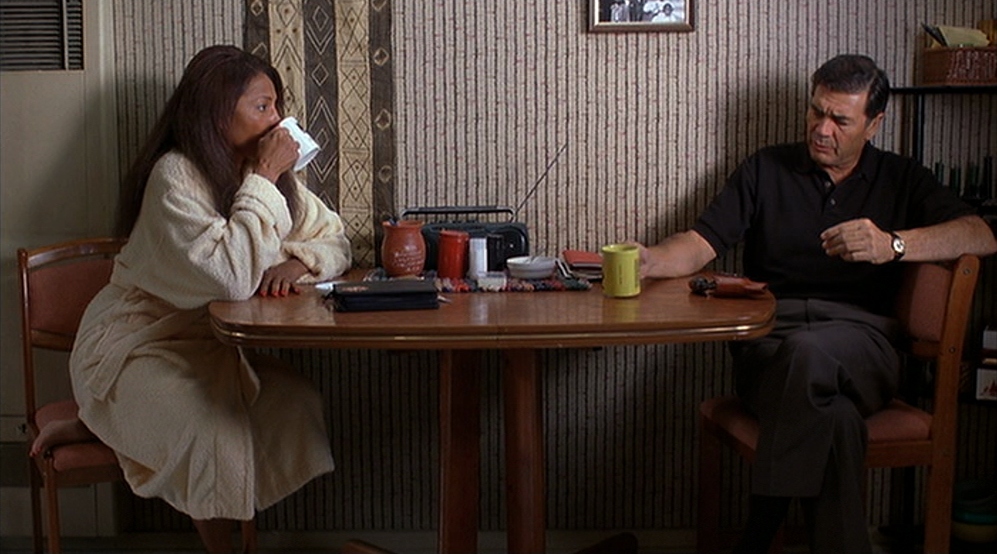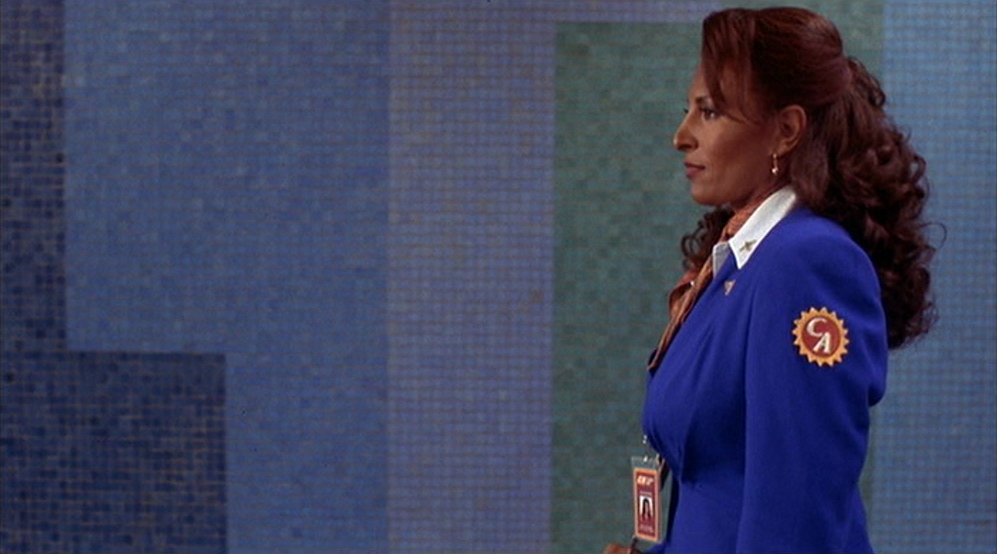Ever since I first saw Quentin Tarantino’s third feature, Jackie Brown, it has always represented an odd curio in his personally beloved oeuvre. While neither rare nor unusual as the definition of this particular descriptor would claim, it is deeply intriguing. In fact, I would (and will) argue that it’s a film which represents a massive “what if?” in Tarantino’s legendary career. The reason being is twofold.
Firstly, it’s the only film of his where he works with an adapted screenplay. Based on the Elmore Leonard novel Rum Punch, Tarantino’s film remains largely faithful to the original text, save for one major change. With his deep passion for blaxploitation films vocally known, he changed the main character from a white man to a Black woman, and placed screen legend Pam Grier in the now titular role of Jackie Brown. From here, the film is off to the races. With Grier playing against the late, great Robert Forster, Jackie Brown does something which many critics of Tarantino often ridicule him for.

With Once Upon A Time… In Hollywood, it felt as if Tarantino had finally made what many could deem as “mature.” Obviously his films are largely hyper-violent and vulgar, but with Once Upon A Time… In Hollywood, it felt like he stripped most of his biggest mainstays away to get at the heart of something essential. Of course, he completely lets loose with the climactic home invasion finale, but prior to that point, the film often ruminates on a set of lives living to their fullest extent. Each character is given just a few more moments of reveling in the glamor. Some are hoping that it never comes crashing down, and some never think that’s a possibility in the first place. But every time I watch Jackie Brown, I can’t help but feel that this is his first “mature” film. After all, what is Jackie Brown about if not ruminating about the golden days being long gone, and clinging onto whatever shred of time we still have left? In the film, it’s incredibly beautiful as the two leads discuss what it’s like to realize that time marches ever onward, but that’s no reason to simply lay over and take what comes. Forget becoming a pothead with repressed anger issues (played so unbelievably well by Robert DeNiro, in what, funnily enough, may be my favorite role of his). When presented with an opportunity to take the house after all it has done is take and take, make the most of the opportunity given to us. It’s in a simple conversation between Grier and Forster set to the Delfonics that Tarantino, who was then only 34, makes his thesis statement on what it means to age.
Going further than a simple case of maturity ahead of Tarantino’s time, Jackie Brown will always serve as a fascinating stylistic example of “what if?” The predecessor to this film, Pulp Fiction, needs no table setting. It’s a totemic piece of cinema, and to follow it up in any capacity could be, and in many ways was, an exercise in futility. So for such a rich film like Jackie Brown to release 3 years later, and feel so starkly committed to taking a route that feels the least like a
Tarantino film, audiences at some point seemed to want to dismiss this film in favor of its follow up: Kill Bill Vol. 1. It’s as if Tarantino understood what he trained his audiences to salivate over, and dialed it up to the maximum degree with his loving ode to martial arts films. But Jackie Brown will always be there to serve as a reminder that Tarantino surprised his audience over two decades before he would really prove it with Once Upon A Time… In Hollywood. Many obviously love the body of work Tarantino has given us over the years. Myself included. But every viewing of Jackie Brown makes me wonder what might have happened if he took the route that he toyed with in 1997. It feels like the latter half of his career may shape up to loop back around to that specific vibe. Many of us will tune in for whatever Tarantino has to offer at this point, but whenever Jackie Brown comes up, we should be sure to really sing its praises as if it’s “Across 110th Street.”
Jackie Brown will be screening at the Museum of the Moving Image as part of their Snubbed 2: The Performances series. For more information on the screening and the series, head here.
